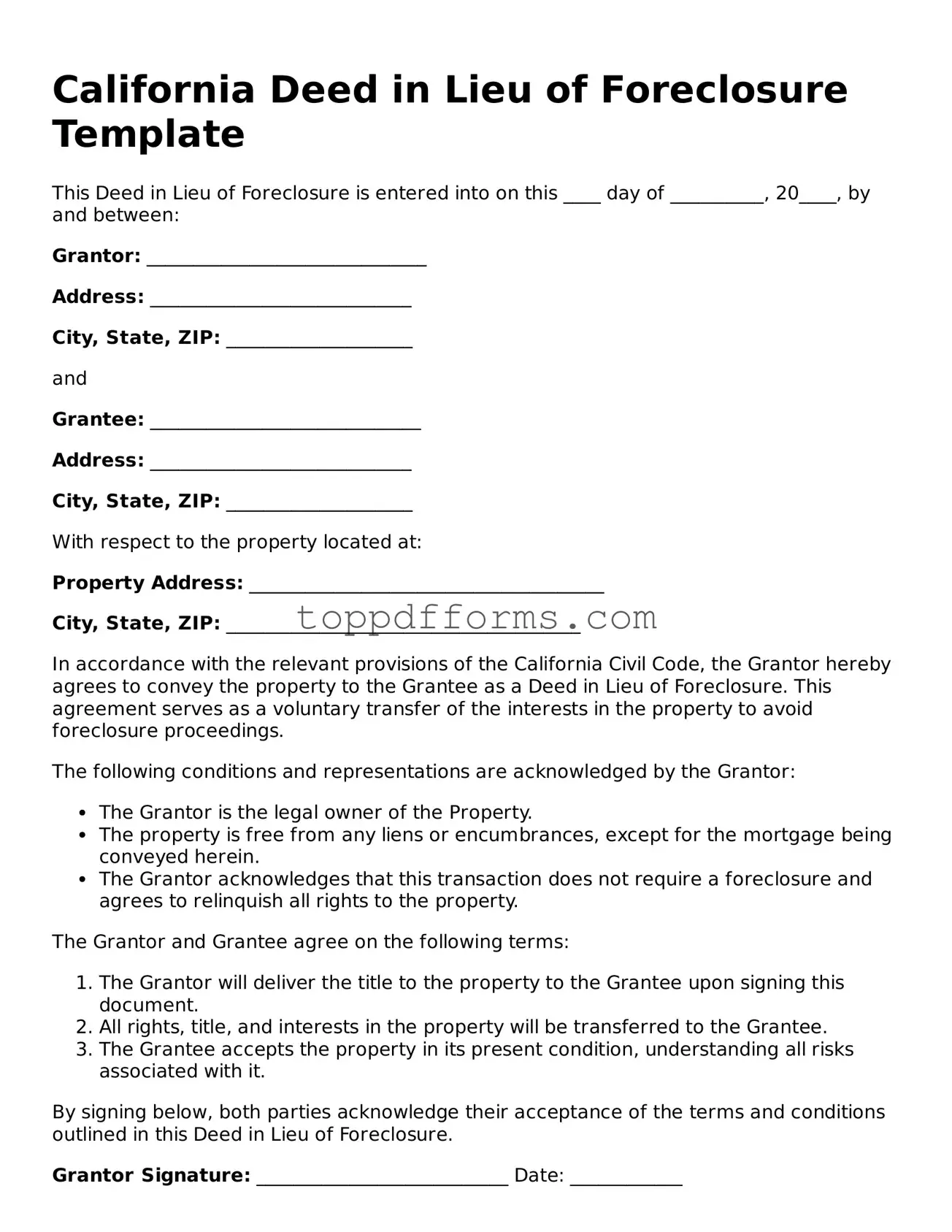What is a Deed in Lieu of Foreclosure?
A Deed in Lieu of Foreclosure is a legal process that allows a homeowner to voluntarily transfer the title of their property to the lender in order to avoid foreclosure. This option can be beneficial for homeowners who are struggling to make their mortgage payments and want to avoid the lengthy and often stressful foreclosure process. By agreeing to a Deed in Lieu, the homeowner can settle their mortgage debt more amicably and potentially reduce the impact on their credit score compared to a foreclosure.
Who qualifies for a Deed in Lieu of Foreclosure in California?
In California, homeowners who are facing financial hardship and are unable to keep up with their mortgage payments may qualify for a Deed in Lieu of Foreclosure. Lenders typically look for homeowners who have a genuine financial difficulty, such as job loss, medical expenses, or other significant financial burdens. Additionally, the property must usually be free of other liens, and the homeowner must be willing to vacate the property. Each lender may have specific requirements, so it’s important for homeowners to consult with their lender to understand their eligibility.
What are the benefits of a Deed in Lieu of Foreclosure?
There are several benefits to opting for a Deed in Lieu of Foreclosure. First, it can help homeowners avoid the lengthy foreclosure process, which can take several months or even years. Second, it often results in a less damaging impact on the homeowner's credit score compared to a foreclosure. Third, homeowners may be able to negotiate a release from any remaining mortgage debt, which can provide financial relief. Lastly, the process is generally more straightforward and can be completed more quickly than traditional foreclosure proceedings.
What are the potential drawbacks of a Deed in Lieu of Foreclosure?
While there are benefits, there are also potential drawbacks to consider. Homeowners may face tax implications, as the IRS could treat any forgiven mortgage debt as taxable income. Additionally, the homeowner loses their property, which can be an emotional and difficult transition. It’s also important to note that not all lenders accept Deeds in Lieu, and some may prefer to proceed with foreclosure. Homeowners should weigh these factors carefully before making a decision.
How does the process of a Deed in Lieu of Foreclosure work?
The process typically begins with the homeowner contacting their lender to express their interest in a Deed in Lieu of Foreclosure. The lender will then review the homeowner’s financial situation and property details. If both parties agree to proceed, the homeowner will sign a deed transferring ownership of the property to the lender. The lender may also require the homeowner to vacate the property by a certain date. Once the deed is executed, the lender will usually release the homeowner from the mortgage obligation, although this is subject to negotiation.
Can a homeowner still pursue a Deed in Lieu if they are already in foreclosure?
Yes, homeowners can still pursue a Deed in Lieu of Foreclosure even if they are already in the foreclosure process. However, it is crucial to act quickly, as the foreclosure process can move rapidly. Homeowners should communicate with their lender as soon as possible to explore this option. Lenders may be more willing to consider a Deed in Lieu if it can help them avoid the costs and time associated with completing a foreclosure.
What documentation is needed for a Deed in Lieu of Foreclosure?
Homeowners will need to provide various documents to their lender when seeking a Deed in Lieu of Foreclosure. This typically includes financial statements, tax returns, proof of income, and details about the property. The lender may also require a hardship letter explaining the homeowner's financial difficulties. Each lender may have specific documentation requirements, so it is essential to check with them for a complete list.
Is legal advice recommended when considering a Deed in Lieu of Foreclosure?
Yes, seeking legal advice is highly recommended when considering a Deed in Lieu of Foreclosure. A qualified attorney can help homeowners understand their rights, the implications of the deed, and any potential tax consequences. Legal guidance can also assist in negotiating terms with the lender and ensuring that the homeowner’s interests are protected throughout the process.
What happens after the Deed in Lieu of Foreclosure is completed?
Once the Deed in Lieu of Foreclosure is completed, the lender becomes the new owner of the property. The homeowner will need to vacate the property, and the lender will typically handle the sale or management of the property moving forward. The homeowner should receive confirmation from the lender regarding the release of any remaining mortgage debt, if applicable. It is also advisable for homeowners to check their credit report after the process to ensure that the deed has been recorded accurately.
